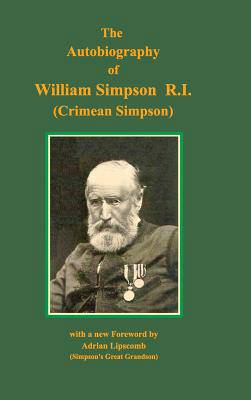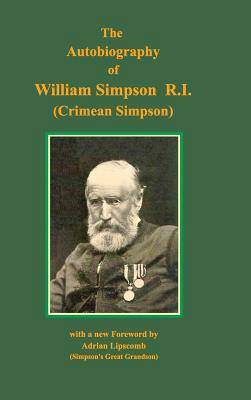
- Retrait gratuit dans votre magasin Club
- 7.000.000 titres dans notre catalogue
- Payer en toute sécurité
- Toujours un magasin près de chez vous
- Retrait gratuit dans votre magasin Club
- 7.000.0000 titres dans notre catalogue
- Payer en toute sécurité
- Toujours un magasin près de chez vous
57,45 €
+ 114 points
Format
Description
William Simpson is widely-known known today as the War Artist whose first-hand depiction of the Crimean War helped bring home the reality of that ill-managed campaign to the British public. His were the surrogate eyes of Empire in many Victorian military adventures, and he reported faithfully and, indeed, sometimes disapprovingly, on what he saw. Simpson was the first of the Victorian "Special Artists" whose primary focus was war, a group that has now yielded place to embedded war correspondents and photographers. But Simpson was more than just a War Artist - his artistic stock in trade encompassed both the military and civil achievements of a world in which the British Empire was at its peak. He was a Scot and proudly independent, and although attendant upon a culture in which jingoism was the dominant paradigm, he had a rare understanding of, and empathy with, many cultures other than his own. As such, he became one of that curious breed of peripatetic Britons who thrived on desolate places and exotic peoples - a breed that included the likes of Sir Richard Burton, Mary Kingsley, David Roberts and David Livingstone. In the process, he acquired a broad knowledge of religion, history, ethnography, archaeology, architecture and linguistics marking him as a true polymath. Simpson has come down in history as one of the chief chroniclers of the Victorian era. His paintings are represented in all the major British galleries and exhibitions, including the Victoria & Albert Museum, the British Museum, and the Glasgow Art Gallery. His notebooks and sketchbooks now reside (among other places) in the India Office Library in London, the Anne S. K. Brown Military Collection (Brown University, Rhode Island, USA), the Edinburgh Library, and the Turnbull Library in Wellington, New Zealand. He was a man of remarkable talent, perseverance, and intelligence, whose place in history is justly secure.
Spécifications
Parties prenantes
- Auteur(s) :
- Editeur:
Contenu
- Nombre de pages :
- 432
- Langue:
- Anglais
Caractéristiques
- EAN:
- 9781389849381
- Date de parution :
- 20-07-17
- Format:
- Livre relié
- Format numérique:
- Genaaid
- Dimensions :
- 152 mm x 229 mm
- Poids :
- 743 g

Les avis
Nous publions uniquement les avis qui respectent les conditions requises. Consultez nos conditions pour les avis.






